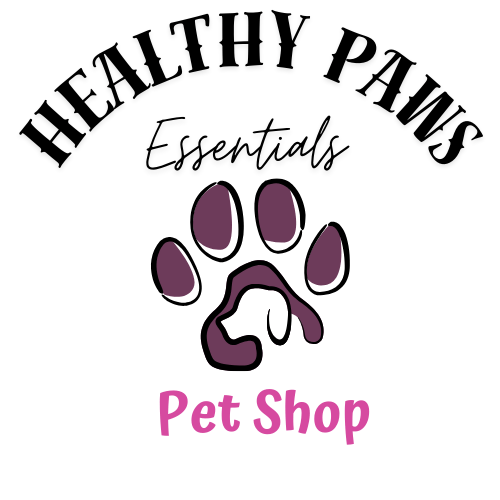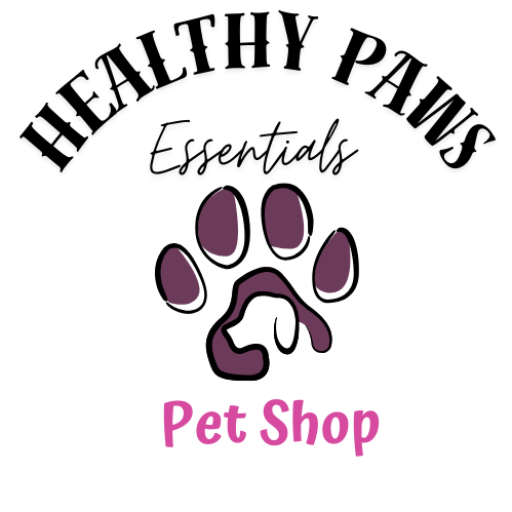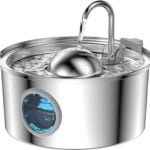
When you choose grain-free dog food for your furry friend, you’re making an investment in their health and happiness. Grain-free diets are crafted to better align with your dog’s natural dietary needs, often reducing allergens and promoting healthier skin and coat. Such diets typically feature higher levels of protein and essential nutrients like omega-3 fatty acids and glucosamine, contributing to joint health, strong immunity, and overall well-being. By opting for grain-free food, you’re taking a significant step towards ensuring your canine companion enjoys an active, vibrant life at every age. Have you ever wondered about the best diet to keep your canine companion in peak condition? You’re certainly not alone! Many dog owners are increasingly seeking the best nutritional options to ensure their pets live healthy, happy lives. One trend gaining traction is grain-free dog food. But what does it really offer, and could it be the best choice for your furry friend? Let’s explore “The Benefits of Grain-Free Dog Food for Canine Health” to shed some light on this topic.
What is Grain-Free Dog Food?
Grain-free dog food is exactly what it sounds like: food formulated without grains like wheat, corn, rice, barley, and oats. Instead, these diets may incorporate alternatives like potatoes, lentils, and peas. But why are so many pet owners and veterinarians advocating for grain-free options?
Removing Common Allergens
Grains can be common allergens for some dogs, causing issues like itchy skin, ear infections, and gastrointestinal upset. By removing grains from the diet, you may see a significant improvement in your dog’s health and comfort.
Higher Quality Ingredients
Grain-free dog foods often emphasize higher-quality proteins and nutritious vegetables. This switch can deliver a more balanced, nutrient-dense diet for your dog.
Benefits of Grain-Free Dog Food
Grain-free dog food offers numerous benefits to support your dog’s overall health and well-being.
Improved Digestion
Since some dogs struggle to digest grains, switching to a grain-free diet can often lead to better digestion and more consistent bowel movements. This can make a world of difference for dogs experiencing gastrointestinal discomfort.
Enhanced Energy Levels
A diet rich in protein and low in fillers can boost your dog’s energy levels. This is particularly beneficial for active dogs who need adequate fuel for their activities.
Healthier Skin and Coat
Many grain-free dog foods include omega-3 fatty acids from sources like fish oil. Omega-3s are vital for maintaining healthy skin and a shiny coat, making your dog not just feel good, but look good too.
Lower Inflammation Levels
Ingredients like sweet potatoes and peas are not just grain substitutes; they are also anti-inflammatory. Lowering inflammation can benefit dogs with joint issues or chronic inflammation.
Better Weight Management
A grain-free diet is often lower in carbohydrates, which helps in maintaining a healthy weight. This is especially important for senior dogs or breeds prone to obesity.

Common Ingredients in Grain-Free Dog Food
Understanding what goes into grain-free dog food can help you make informed choices.
Protein Sources
- Chicken: A common protein source that’s easily digestible.
- Fish: High in omega-3 fatty acids, excellent for the skin and coat.
- Beef: Rich in essential amino acids.
- Lamb: A good option for dogs with sensitivities to other protein sources.
Fruits and Vegetables
- Sweet Potatoes: Rich in fiber, vitamins, and anti-inflammatory properties.
- Peas: Loaded with vitamins A, B, and K, and an excellent source of protein.
- Blueberries: Packed with antioxidants and vitamins.
- Carrots: Great for dental health and high in beta-carotene.
Healthy Fats
- Fish Oil: High in EPA and DHA for better cognitive and joint health.
- Coconut Oil: Supports skin health and improves digestion.
Supplements and Additives
Many grain-free dog foods come fortified with supplements that boost overall health.
- Glucosamine and Chondroitin: Commonly used for joint health.
- Probiotics: Aid in digestion and healthy gut bacteria balance.
- Vitamins and Minerals: Ensure your dog receives a balanced nutrient intake.
Canine Health Benefits: A Closer Look
Grain-free dog food isn’t just a trend; it’s a lifestyle choice that offers multiple health benefits.
Digestive Health
Grains can be difficult for some dogs to digest, leading to bloating, gas, and diarrhea. A grain-free diet can ease these symptoms. Additionally, the inclusion of high-fiber vegetables like sweet potatoes and peas can improve digestive health.
Joint Health
Grain-free diets often include ingredients like fish oil and glucosamine, which support joint health. This can be especially beneficial for older dogs or breeds prone to hip and joint problems.
Skin and Coat Health
Omega-3 fatty acids found in many grain-free dog foods help improve skin and coat health. Issues like dry skin, hot spots, and dull coats often see improvement on a grain-free diet.
Weight Management
Lower carbohydrate content aids in maintaining a healthy weight, which is crucial for senior dogs and breeds susceptible to obesity. Obesity can lead to numerous health problems, including diabetes and heart disease, so weight management is paramount.
Dental Health
Grain-free foods with natural, crunchy textures can help keep your dog’s teeth clean. Carrots and apples not only offer essential nutrients but also contribute to dental health by reducing plaque buildup.
Efficient Energy Utilization
High-protein diets lead to better energy utilization, which can improve your dog’s stamina and overall vitality. This is particularly advantageous for working dogs or active breeds.
Allergy Management
By eliminating common allergens, grain-free diets can significantly reduce symptoms like itching, ear infections, and hot spots. This leads to a more comfortable, happier dog.

Choosing the Right Grain-Free Dog Food
Switching your dog to a grain-free diet involves careful consideration to ensure you’re choosing the right food for their specific needs.
Consult Your Veterinarian
Always consult your veterinarian before making significant changes to your dog’s diet. They can provide personalized advice based on your dog’s medical history and nutritional requirements.
Look for Quality Seals
When shopping for grain-free dog food, look for quality seals such as the NASC Quality Seal. This ensures the food meets high standards for safety and efficacy.
Read Labels Carefully
Not all grain-free dog foods are created equal. Read the ingredient list and avoid foods with fillers, artificial preservatives, and low-quality protein sources.
Transition Gradually
Sudden changes in diet can upset your dog’s stomach. Gradually mix the new grain-free food with their existing diet over a period of 7-10 days to ease the transition.
Monitor Your Dog
Observe your dog for any changes in behavior, energy levels, skin condition, and stool quality after switching to a grain-free diet. This helps to ensure the new diet is effectively meeting their needs.
Common Misconceptions About Grain-Free Dog Food
Despite its benefits, there are some misconceptions about grain-free dog food that are worth addressing.
Grain-Free Equals Carb-Free
A common misconception is that grain-free means carb-free. Grain-free foods can still contain carbohydrates from other sources like potatoes and lentils. The key is to choose a balanced formula that meets your dog’s nutritional needs.
Over-Emphasis on Protein
While protein is essential, a balanced diet includes fats, carbohydrates, vitamins, and minerals. Avoid over-emphasizing protein to the detriment of other nutrients.
Only Beneficial for Allergies
Grain-free dog food is beneficial for more than just allergy management. It offers improvements in digestion, joint health, and skin condition, making it suitable for many dogs.
More Expensive is Always Better
Higher cost doesn’t always equate to higher quality. Always research and read reviews to find a quality grain-free dog food within your budget.

Comparing Grain-Free and Grain-Inclusive Diets
To truly understand the benefits of grain-free dog food, let’s compare it to grain-inclusive diets.
| Aspect | Grain-Free Dog Food | Grain-Inclusive Dog Food |
|---|---|---|
| Primary Ingredients | Meat, vegetables, fruits | Grains like corn, wheat, rice |
| Protein Content | Generally higher | Can be lower |
| Digestion | Easier for grain-sensitive dogs | May cause issues for sensitive dogs |
| Common Allergens | Free from common allergens like wheat | May contain allergens |
| Weight Management | Often lower in carbs, aiding in weight control | Varies, can be higher in carbs |
| Joint Health | May include joint-supporting supplements | Less likely to include specific supplements |
| Skin and Coat | Often enriched with omega-3 fatty acids | May not prioritize omega-3s |
Making the Transition to Grain-Free Dog Food
Ready to make the switch? Here’s a step-by-step guide to safely transition your dog to a grain-free diet.
Step 1: Consult Your Vet
Before making any dietary changes, consult your veterinarian to ensure it’s a suitable choice for your dog.
Step 2: Choose a High-Quality Grain-Free Food
Look for a grain-free dog food that lists quality protein sources and nutritious vegetables in the first few ingredients. Avoid products with fillers and artificial additives.
Step 3: Gradual Transition
Mix the new grain-free food with your dog’s current diet, gradually increasing the amount of grain-free food over 7-10 days. This helps avoid gastrointestinal upset.
Step 4: Monitor Health and Behavior
Keep an eye on your dog’s stool quality, energy levels, skin, and coat condition after making the switch. This will help ensure the new diet is meeting their needs.
Step 5: Make Adjustments
If you notice any adverse reactions, consult your veterinarian. They may recommend trying a different grain-free formula or addressing specific nutritional needs.
Final Thoughts
The benefits of grain-free dog food for canine health are multifaceted, from improved digestion and joint health to a shinier coat and enhanced energy levels. While no diet is one-size-fits-all, many dogs thrive on grain-free foods. By consulting with your veterinarian and selecting a high-quality grain-free food, you can support your dog’s overall health and well-being.
So why not give it a try? Your dog might just thank you with better health and endless wagging tails.







